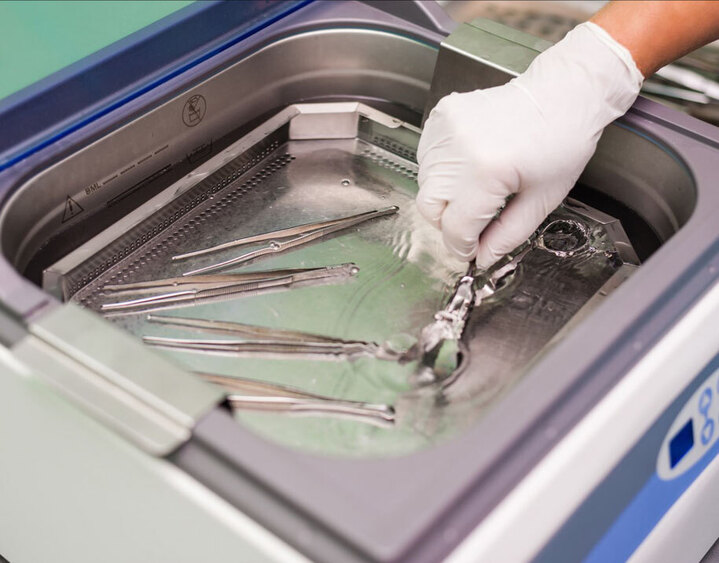- Home
- Blogs
Ultrasonic cleaner and dental instrument hygiene

Ultrasonic cleaners assume an urgent role in keeping up with perfect cleanliness guidelines for dental instruments—vital for ensuring patient security and contamination control. The purpose of this article is to provide a comprehensive understanding of the significant factors that influence the effectiveness of ultrasonic cleaners in dental instrument hygiene. These factors include the interchanges, difficulties, and consequences of making decisions in this crucial field.
The Workings of Ultrasonic Cleaners: Guaranteeing Careful Instrument Cleaning
Ultrasonic cleaners use high-return sound waves to create a huge number of small air pockets in a cleaning arrangement. On dental instruments, these bubbles explode, effectively removing contaminants, bacteria, and other debris from intricate surfaces that manual cleaning might miss. However, there may need to be adjustments made in terms of cycle time, temperature, or the kind of cleaning solution used in order to get the best cleaning results.
Factors Impacting Cleaning Capability: Balancing Variables
There are a number of factors that affect how well ultrasonic cleaner clean dental instruments. The concentration of the cleaning solution, temperature, and frequency settings all have a significant impact on the results of the cleaning. Changing these factors to improve cleaning possibility might require careful consideration of tradeoffs, for example, extended energy utilization or potential material similarity issues.
Obstacles to Getting the Best Hygiene: Beating Hurdles
While ultrasonic cleaners are profoundly effective, challenges continue to arise in achieving ideal cleanliness norms. It can be difficult to ensure that all contaminants are removed completely, especially from complicated dental instruments. Cleaning protocols and process validation must be carefully considered in order to achieve uniform cleaning across various instrument sizes and types.
The Significance of Dynamic Dental Cleanliness: Influence on Understanding Safety
Choices in regards to ultrasonic cleaner settings, cleaning arrangements, and conventions altogether influence patient security and contamination control. Making the right choices directly lowers the likelihood of infections and cross-contamination. It is critical to think about rapid cleaning capability as well as the drawn-out influence on persistent security while chasing choices in dental instrument cleanliness.
Adjusting Productivity and Security: Finding the Right Balance
It is essential to strike a balance between instrument safety and cleaning efficiency. Instrument integrity may be compromised by aggressive cleaning, which could result in damage or a shorter lifespan. Therefore, careful consideration and adherence to manufacturer-recommended guidelines are required to strike a balance between cleaning efficiency and instrument quality.
Consistence and Approval: Maintaining Standards
Consistence with administrative principles and approval of cleaning processes are basic to dental instrument cleanliness. A safe and healthy dental practice is made possible by observing to established protocols and guidelines, which ensure that instruments meet the necessary hygiene standards.
Conclusion
In conclusion, ultrasonic cleaners are useful tools for keeping dental instruments clean. For dental practices to maintain the highest levels of cleanliness, patient safety, and infection control, it is essential to understand the factors that influence their efficiency, address problems, and make well-informed decisions.

